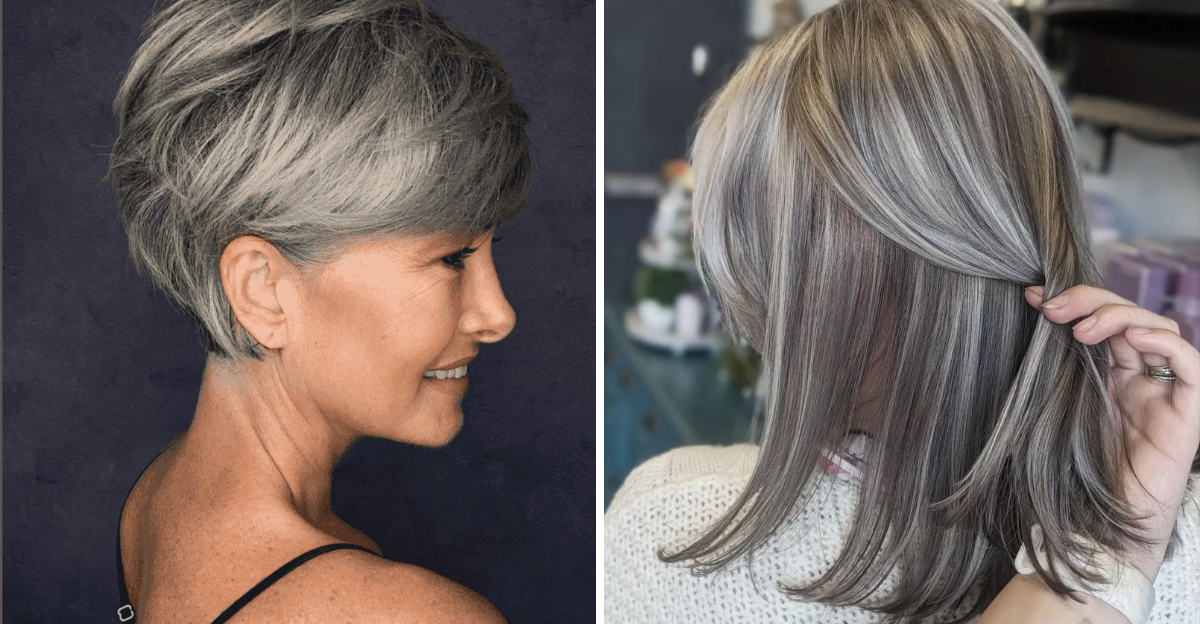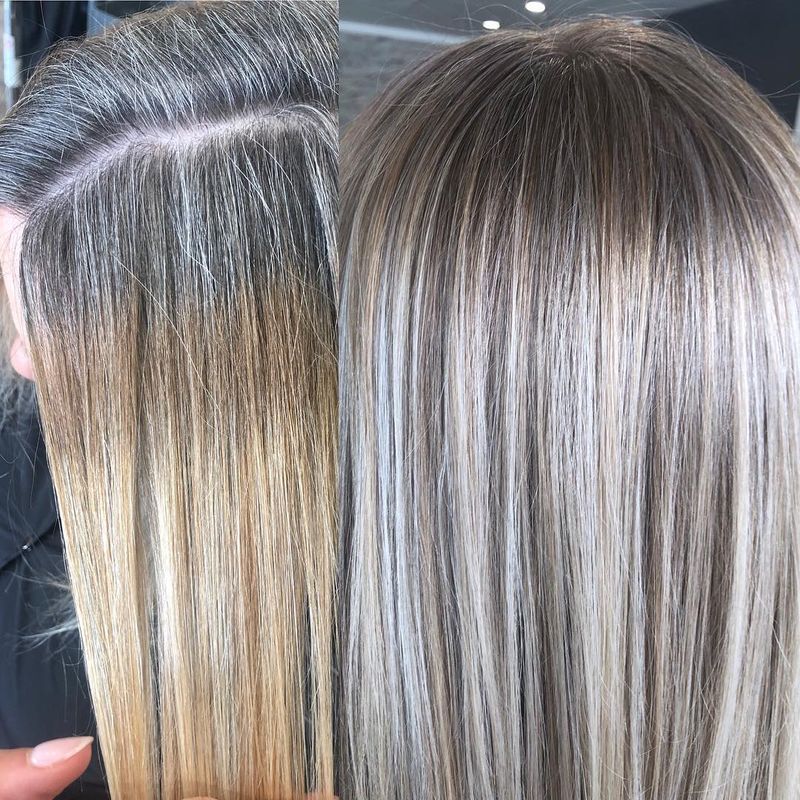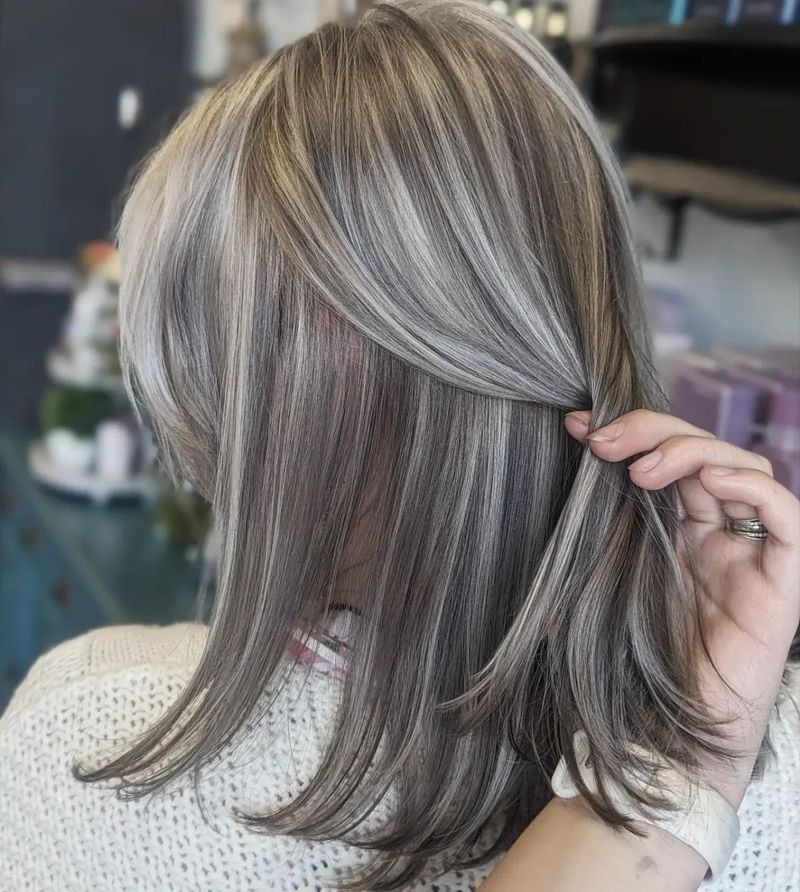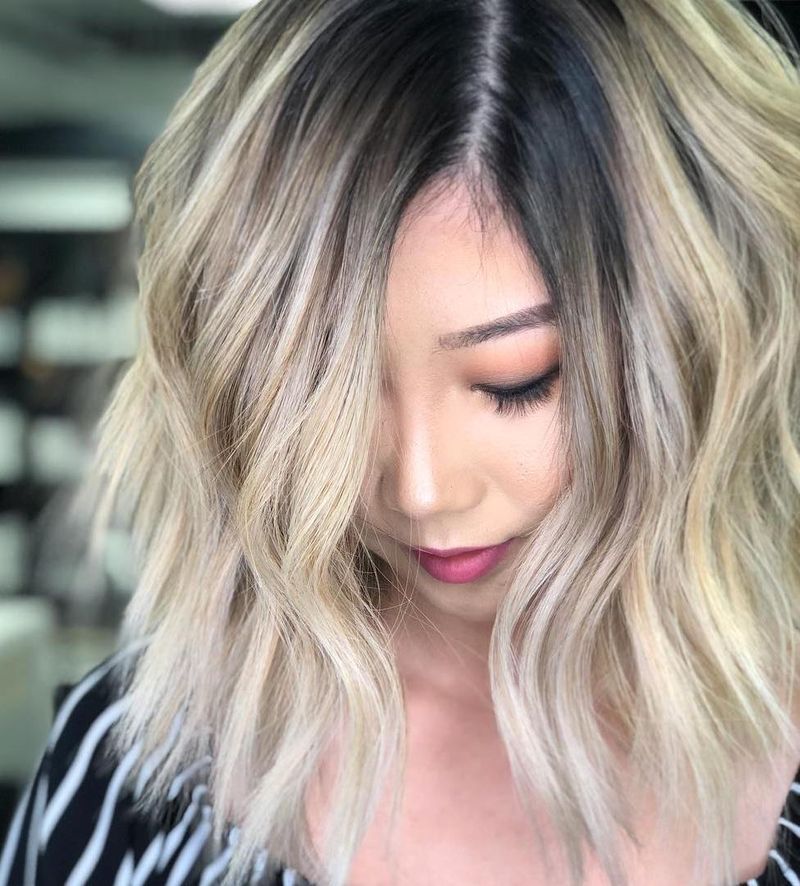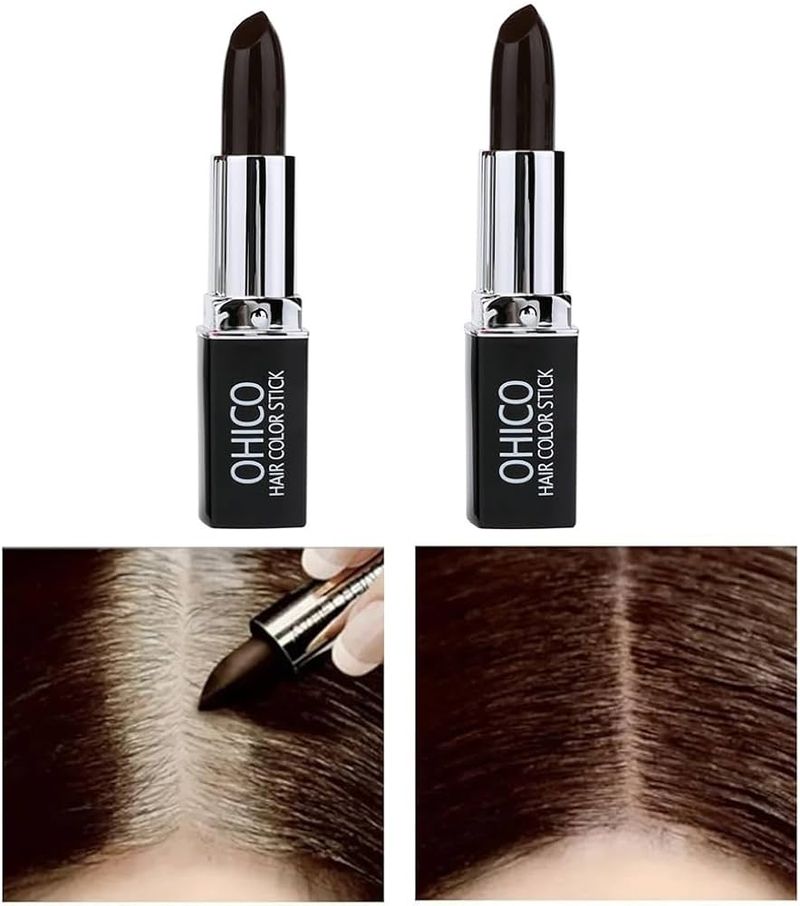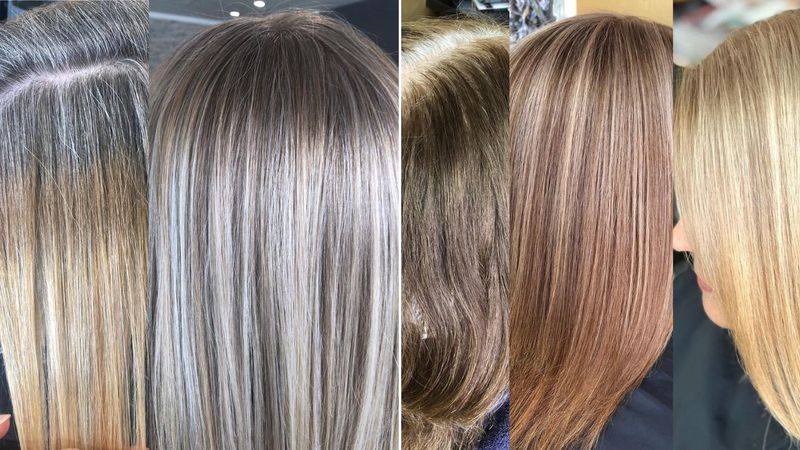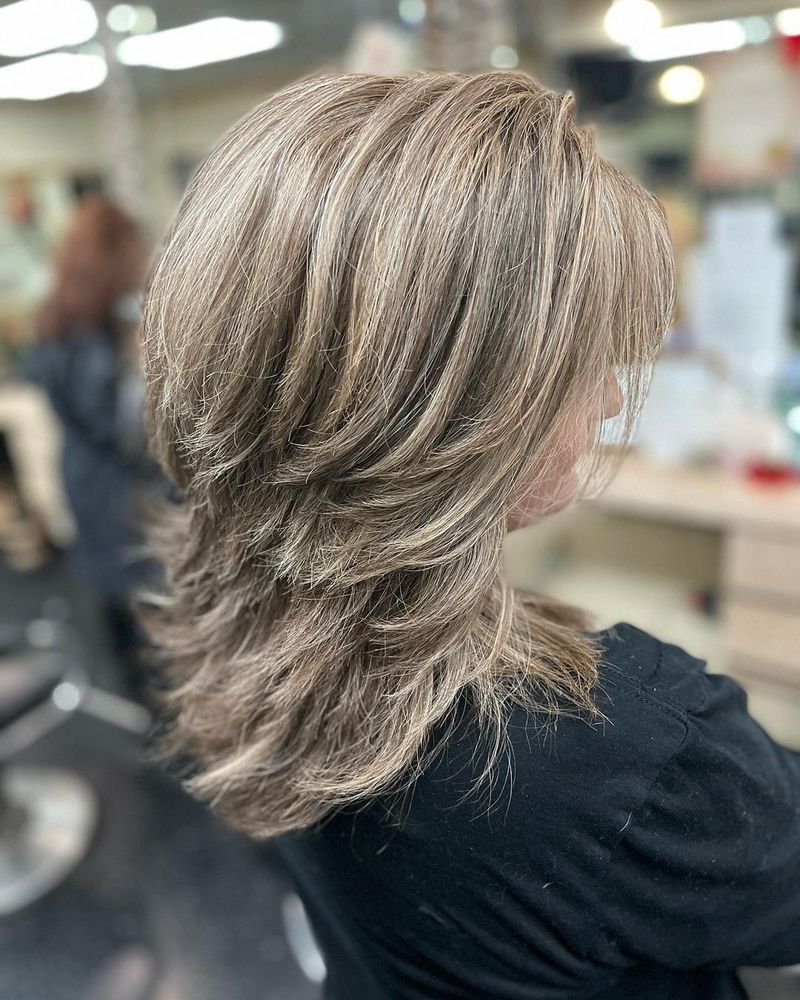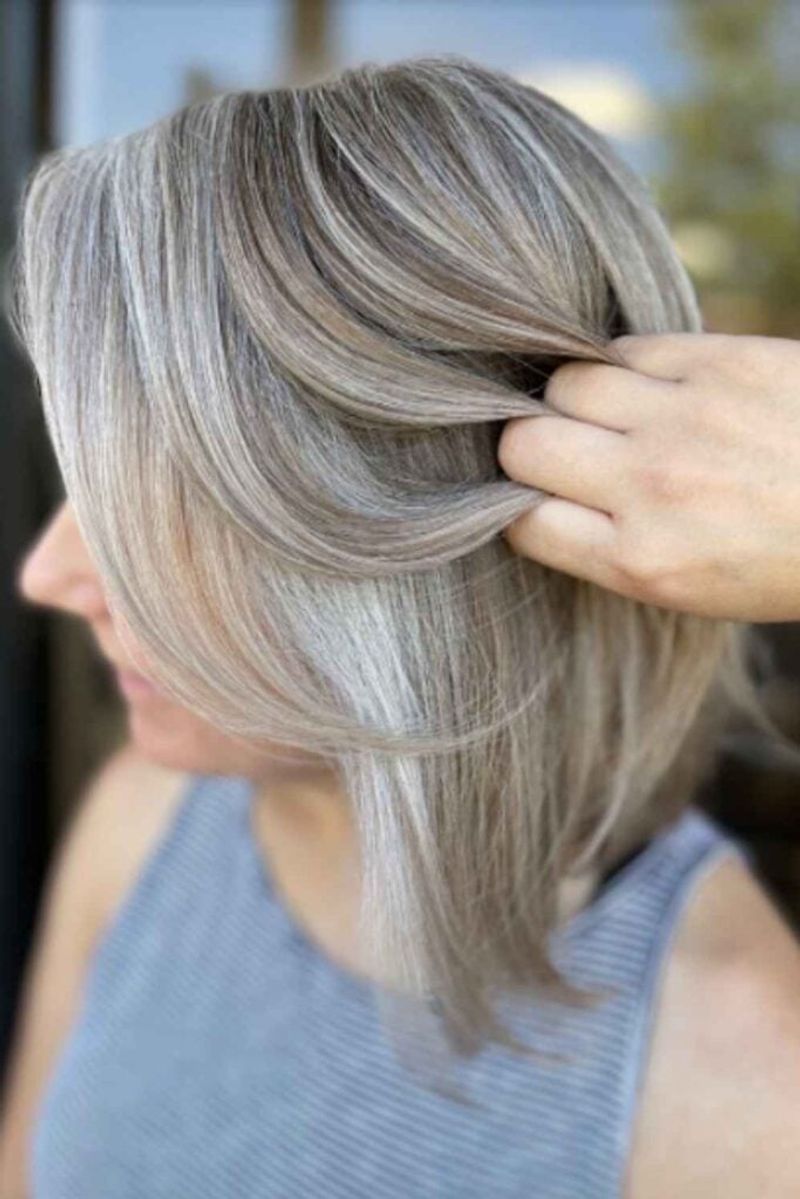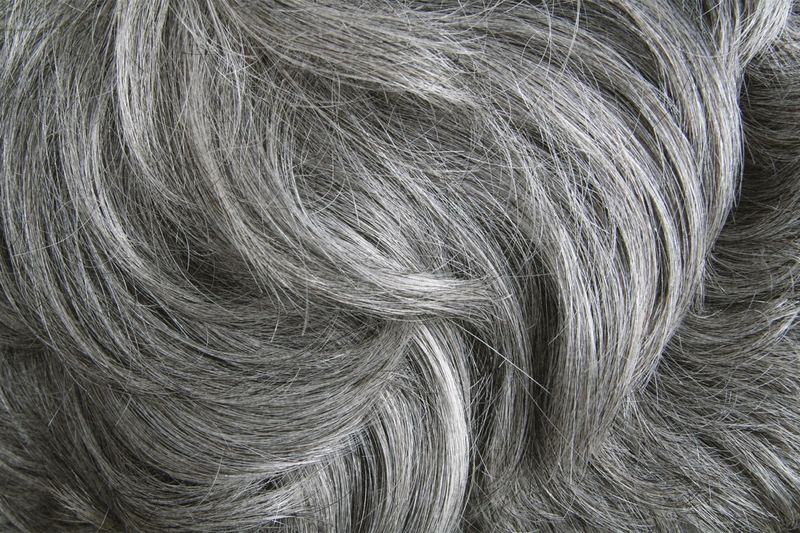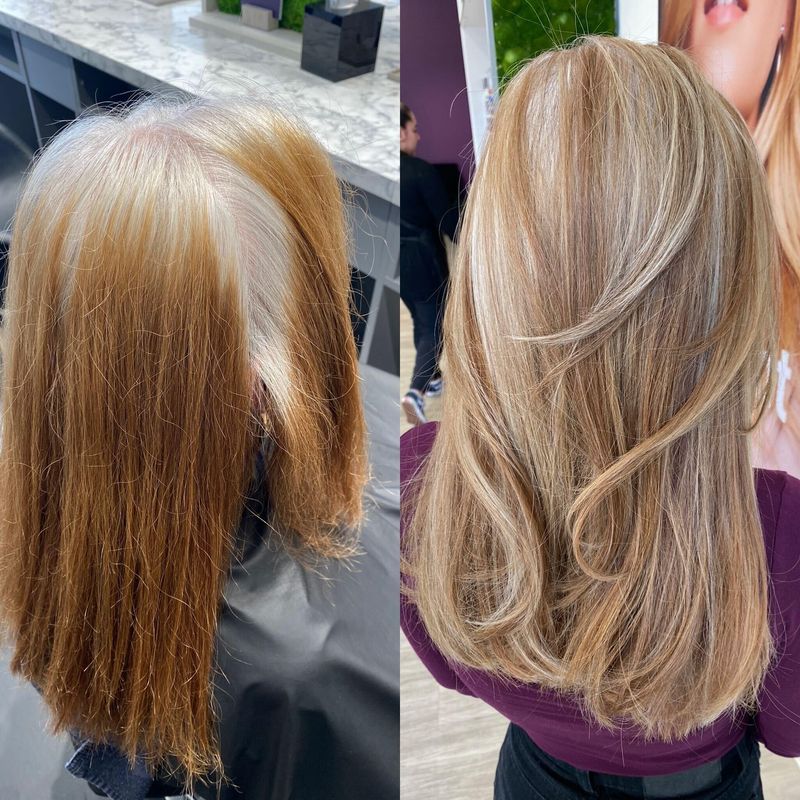Transitioning to gray hair doesn’t have to mean months of awkward roots and harsh lines. Root blending offers a smoother path to embracing your natural silver strands while maintaining your confidence.
This game-changing technique helps you grow out gray hair with style and minimal maintenance, making the journey as beautiful as the destination.
1. Start with Subtle Highlights
Adding fine highlights near your roots creates a seamless blend between colored and gray hair. The dimension makes the transition less noticeable as your natural color grows in.
This gentle approach eases you into the process without dramatic changes.
Related: -7 Straight-Hair Problems No One Talks About And 8 Easy Fixes That Shine
2. Lowlights for Dimension
Lowlights add depth to graying hair by introducing darker strands among the silver. They create a multi-tonal effect that mimics natural hair variation.
The contrast softens the line between dyed and natural growth.
3. Balayage Technique
Hand-painted highlights create a sun-kissed, graduated effect perfect for blending gray roots. Unlike traditional foils, balayage offers a more natural grow-out pattern.
The freehand application means no harsh lines as your silver strands emerge.
4. Shadow Roots Approach
Deliberately darkening the area where roots meet colored hair creates a smoother transition zone. This technique embraces the root growth rather than fighting it.
Many celebrities use this method for a modern, lived-in look while transitioning.
5. Regular Toning Treatments
Purple or blue toning products neutralize yellowing in gray hair while adding shine. Weekly treatments keep your emerging silver looking intentional and bright.
These products deposit temporary color that refreshes between salon visits.
6. Pixie Cut Transition
Brave souls might consider a short pixie cut to speed up the transition process. Growing out gray becomes much quicker when you’re starting with less length.
A skilled stylist can incorporate your natural gray into a flattering, modern shape.
7. Strategic Parting Changes
Switching your part location can hide or distribute gray growth more evenly. A zigzag part breaks up the line where gray meets colored hair.
Experiment with side parts if your gray is concentrated at the temples for instant camouflage.
8. Root Concealer Products
Temporary root concealers buy time between salon visits without compromising your transition. Sprays, powders, and sticks provide quick coverage for important events.
Many formulas wash out with shampoo, letting you control when to show your progress.
9. Color Melting Technique
Color melting blends multiple shades together without harsh lines. Your stylist creates a gradient effect from roots to ends, incorporating your natural gray.
The seamless transition makes regrowth far less noticeable between appointments.
10. Glossing Treatments
Semi-permanent glosses add shine while subtly toning both gray and colored sections. The transparent color refreshes your look without covering grays completely.
These gentle treatments fade gradually, preventing obvious regrowth lines.
11. Strategic Layering
Textured layers break up the visible line between gray roots and colored ends. Movement in your hair naturally disguises the transition zone.
Layers also reduce overall weight, making your hair appear more voluminous during the awkward growth phase.
12. Babylights for Blending
Ultra-fine highlights mimicking natural sun-kissed strands create a soft blend with emerging gray. Unlike chunky highlights, babylights offer subtle dimension that grows out naturally.
Placed strategically around the face, they brighten your complexion during transition.
13. Salt and Pepper Simulation
Adding darker strands to mostly gray hair creates a natural salt-and-pepper look. This technique works wonderfully for those with patchy gray patterns.
The deliberate mix appears intentional rather than like an awkward growing-out phase.
14. Root Smudging Method
Root smudging softens the line between gray roots and colored lengths. Your colorist applies a shade between your natural and dyed color at the roots.
The diffused effect creates a lived-in look that grows out beautifully without obvious demarcation.
15. Regular Trims Schedule
Committing to regular trims every 6-8 weeks removes the most processed ends gradually. Each cut brings you closer to your fully natural color.
Maintaining shape and health during transition keeps you feeling confident about your evolving look.

